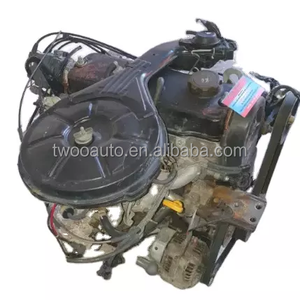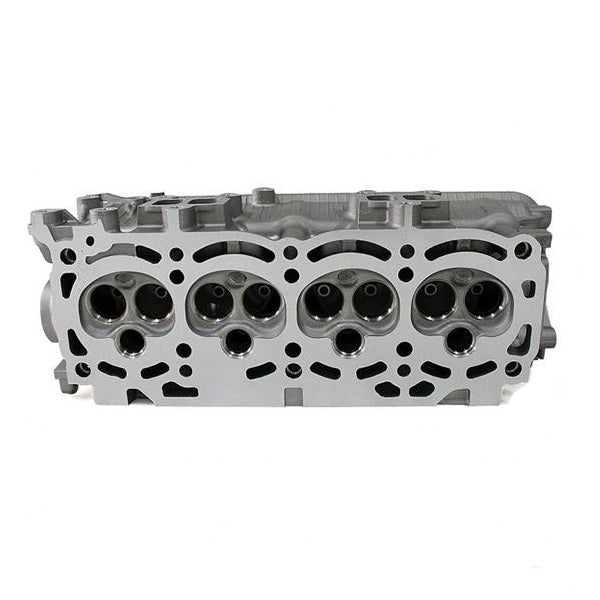Explore the current Patterns in Engine Modern Technology Via Tazz
In the rapidly advancing landscape of auto modern technology, Tazz stands at the leading edge, highlighting considerable advancements in engine systems that focus on both advancement and sustainability. From hybrid engines that optimize gas effectiveness to the development of hydrogen fuel cells, the fads shaping modern powertrains are not just improving efficiency however also addressing essential environmental challenges.
Crossbreed Engine Innovations
Hybrid engine technologies stand for a pivotal change in automobile technology, integrating the benefits of inner combustion engines with electrical propulsion systems. This integration not just enhances gas efficiency yet likewise lowers discharges, conference progressively rigorous environmental laws. By using both power sources, hybrid engines can enhance performance, delivering power when required while conserving fuel throughout less requiring motoring conditions.
Current advancements in hybrid modern technology include enhancements in battery performance and regenerative braking systems. These advancements permit higher power recuperation during slowdown, which can be rerouted to assist in acceleration or power accessory systems. In addition, producers are concentrating on light-weight materials and compact styles to make best use of the efficiency of hybrid powertrains.
The advancement of plug-in crossbreeds has actually additionally increased the marketplace, enabling drivers to charge their cars utilizing common electric outlets. This attribute usually permits substantial all-electric array, more decreasing reliance on conventional gas. tazz. As the automotive market continues to advance, hybrid engine modern technologies are anticipated to play an important duty in linking the space between traditional cars and completely electric models, providing a transitional remedy that satisfies varied consumer needs and preferences
Advances in Electric Powertrains
The auto landscape is swiftly progressing, with electric powertrains emerging as a leading pressure in lasting transportation. Advances in electric vehicle (EV) modern technology are substantially improving performance, customer, and effectiveness experience. Trick advancements include renovations in battery chemistry, which have raised energy thickness, minimized charging times, and prolonged overall battery life.
Solid-state batteries, as an example, guarantee to change the market by providing higher safety and effectiveness contrasted to conventional lithium-ion cells. Furthermore, improvements in regenerative braking systems are allowing vehicles to recuperate power during slowdown, adding to general performance.
In enhancement to battery innovation, electrical motor layouts are becoming a lot more innovative. Innovations such as integrated electric motors and progressed thermal monitoring systems are helping to enhance power shipment and lower weight, ultimately enhancing automobile characteristics.

Collectively, these advancements highlight the commitment to transition in the direction of cleaner, extra reliable transport services, placing electrical powertrains at the center of vehicle advancement.
The Increase of Hydrogen Fuel Cells
Increasingly, hydrogen gas cells are getting traction as a practical alternative to typical inner combustion engines and battery electric lorries. This innovation utilizes the chemical energy saved in hydrogen, converting it into power with an electrochemical reaction with oxygen. The primary result of this process is water, making hydrogen fuel cells an eco-friendly choice with zero emissions at the tailpipe.

Car manufacturers are increasingly purchasing hydrogen fuel cell innovation, identifying its possibility for long-range applications and rapid refueling capabilities that equal standard gas. In addition, sectors such as heavy-duty transport and public transit are especially appropriate for hydrogen fuel cells, where battery electric options might fail as a result of weight and array constraints.
As study and financial investment remain to increase, hydrogen gas cells are positioned to see post play a substantial duty in the future landscape of tidy transport and power options.
Enhancements in Internal Burning Engines
Advancements in interior combustion engine (ICE) innovation are transforming conventional cars to meet modern environmental criteria and efficiency assumptions. One of the most significant improvements entails the combination of sophisticated fuel shot systems. These systems maximize the air-fuel blend, enhancing combustion efficiency and causing minimized discharges. Direct gas shot, for example, enables better atomization of gas, bring about more complete burning and improved power output.
Additionally, turbocharging has actually acquired prestige, enabling smaller sized engines to provide greater performance without the weight of bigger engines - tazz. This technology not just increases performance but additionally adds to decrease fuel usage. Variable shutoff timing systems are likewise being improved, allowing engines to adjust to various driving problems for boosted torque and responsiveness
Furthermore, using lightweight products in engine building and construction is ending up being typical, additional boosting fuel effectiveness by lowering overall automobile weight. Engine control devices (ECUs) are increasingly advanced, making it possible for real-time adjustments that enhance efficiency and emissions.
These enhancements jointly indicate a pivotal shift in ICE innovation, straightening with global sustainability goals while still supplying the efficiency vehicle drivers get out of their cars. As the market advances, these improvements remain continue reading this to shape the future of standard auto design.
Future Fads in Engine Efficiency
Significant developments in engine effectiveness are expected as suppliers concentrate on incorporating sophisticated modern technologies to meet stringent environmental regulations and customer demands. The shift in the direction of electrification, hybrid systems, and different fuels is improving the automobile landscape, driving innovations that enhance gas economic climate and minimize emissions.
Among the key patterns is the application of sophisticated materials and making methods. High-strength alloys and lightweight composites add to lowered lorry weight, hence enhancing visit the website general efficiency. Additionally, the fostering of turbocharging and variable shutoff timing innovations enables for improved power result from smaller sized engines, additionally enhancing fuel economic situation.

Conclusion
Technologies in hybrid engine systems, electric powertrains, and hydrogen fuel cells demonstrate a commitment to minimizing exhausts while boosting performance. Improvements in internal combustion engines and a focus on lightweight materials contribute to general engine effectiveness.
From crossbreed engines that maximize gas performance to the appearance of hydrogen gas cells, the fads forming modern powertrains are not just enhancing efficiency yet additionally addressing crucial environmental challenges.Hybrid engine innovations represent a pivotal shift in automotive modern technology, incorporating the advantages of inner burning engines with electric propulsion systems.Furthermore, turbocharging has gained prominence, permitting smaller sized engines to provide higher performance without the weight of bigger engines. In addition, the fostering of turbocharging and variable valve timing technologies permits for boosted power outcome from smaller engines, further boosting gas economic climate.
Enhancements in internal burning engines and an emphasis on lightweight products add to overall engine performance.